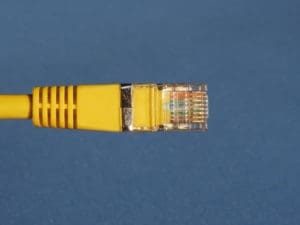 If you’re schooled in tech history, you’ve heard of ARPANET, the U.S. Department of Defense precursor to the Internet. But ARPANET wasn’t the only network to pave the way for the Information Superhighway. Also worthy of mention is NSFNET —a project of the National Science Foundation, a government agency facilitating collaboration among non-medical scientists. On June 9, 1986, NSFNET connected the Pittsburgh Supercomputer Center to supercomputers at the University of California at San Diego, the University of Illinois at Urbana-Champaign, Cornell University, and Princeton University.
If you’re schooled in tech history, you’ve heard of ARPANET, the U.S. Department of Defense precursor to the Internet. But ARPANET wasn’t the only network to pave the way for the Information Superhighway. Also worthy of mention is NSFNET —a project of the National Science Foundation, a government agency facilitating collaboration among non-medical scientists. On June 9, 1986, NSFNET connected the Pittsburgh Supercomputer Center to supercomputers at the University of California at San Diego, the University of Illinois at Urbana-Champaign, Cornell University, and Princeton University.
Academics quickly caught on to use of NSFNET, which would most accurately be described as a “networks of networks,” connecting previously siloed regional networks. Originally, NSFNET featured a six-node, 56 kilobit-per-second backbone, but NSF’s decision to open the network’s use to all academics, not just scientists, meant 56 kbps was soon too slow. NSF officials determined they needed to upgrade to a T1 speed.
Network upgrades and growth
Setting July 1, 1988, as the launch date, NSF partnered with IBM, MCI, the State of Michigan, and a consortium of Michigan universities to upgrade the network. The demand was certainly there: Once NSFNET was operating on a T1 backbone with a capacity of 1.5 megabits per second, traffic continued to jump, increasing more than 20 percent a month. NSFNET users included the creators of Mosaic—students and staff at the University of Illinois’ National Center for Supercomputing Applications, who used NSFNET to develop the first freely available Web browser.
Commercial interests took note of NSFNET’s success and the way the network used routers, switches, and a new technology called ethernet to transmit information. By 1995, the earliest Internet Service Providers had eliminated the need for NSFNET, and the pioneering network’s backbone was decommissioned. NSF worked with commercial interests to ensure a self-governing and viable Internet. NSFNET was no more—but it helped to bring lots of information, NSFW and otherwise, to the masses.
Photo: Claudio Divizia/Shutterstock.com
